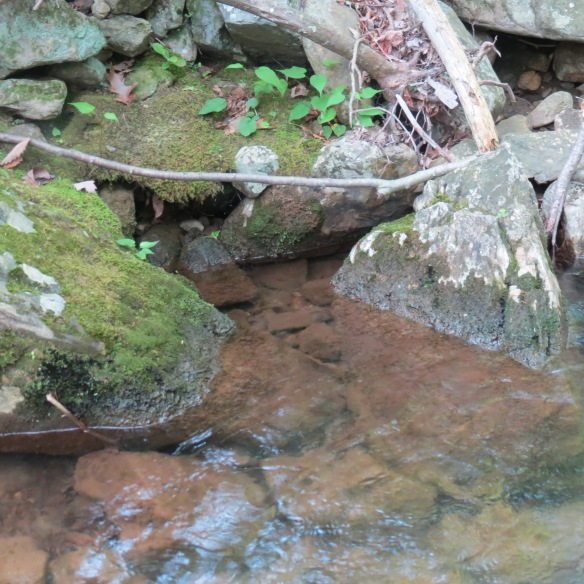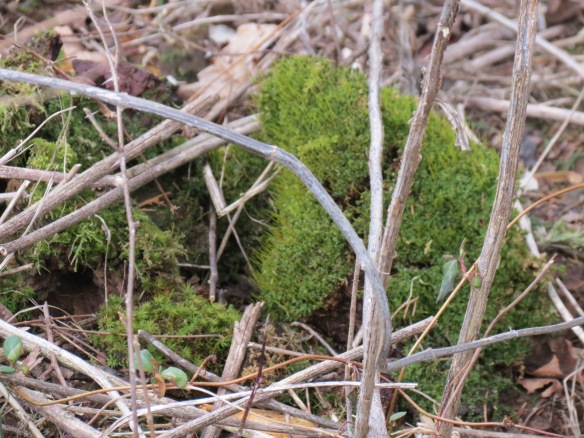Yesterday evening my husband and I got quite a surprise. While taking a walk we noticed a bird huddled in the weeds. The light was dim, but we could tell by his beautiful blue coloring that it was a male Eastern bluebird. Staying very still, he was probably hoping we would pass by without seeing him.
Bill went ahead with the dogs (who hadn’t seen the bird) and I quietly approached the frightened bird. Instead of taking flight, as any healthy bird would do, he ran a few steps and then tried to burrow into the grass. He didn’t resist as I gently cupped my hand around him and lifted him out of the grass. I slipped him into the front pocket of my sweatshirt and headed back to the house.
I called a certified wildlife rehabilitator who instructed me to place him in a shoe box for the night and put the box in a warm, quiet place away from the TV and any other noise. I felt sorry for him, but there was nothing else I could do until morning.
The next morning, I was happy to see that he had made it through the night. I put wild bird seed and water in two jar tops and placed them in the box, but he managed to spill the water and settled into one of the tops like it was a nest.

I gently picked him up to see if I could see any injury. I couldn’t find any obvious injury, but it appeared that his right wing seemed at a slightly different angle than his left wing.

Thinking he could get help sooner if I drove him directly to The Wildlife Center of Virginia in Waynesboro, about 75 miles away, off we went.


Photo courtesy of The Wildlife Center of Virginia
The Wildlife Center was established in 1982 to provide quality health care, often on an emergency basis, for native wildlife. Since 1982, the Center has treated more than 60,000 wild animals, representing more than 200 species of native birds, mammals, reptiles, and amphibians. Staff members are available seven days a week to help deal with wildlife health issues. Contact information and general advice on handling sick, injured or orphaned wildlife can be found on their website (www.wildlifecenter.org).
Visitors are not permitted to go into the area where the animals are placed for evaluation, but the receptionist was kind enough to use my camera to take a picture of their newest patient in his intake “cage.”

I was told they would do an x-ray and if his wing is broken at the shoulder, it wouldn’t be “fixable” because of the large amount of stress placed on the shoulder during flight, and he would have to be euthanized. If the injury can be repaired and he is able to be re-released, they will call me and I can pick him up and let him go on our farm. He would have the best chance of survival in familiar surroundings.
I will call tomorrow to find out the little guy’s fate. Hopefully, he will get the chance to rejoin his home flock and live out his life, but whatever happens, I’m glad there’s a place like the Wildlife Center that is equipped to care for and treat injured wildlife.












